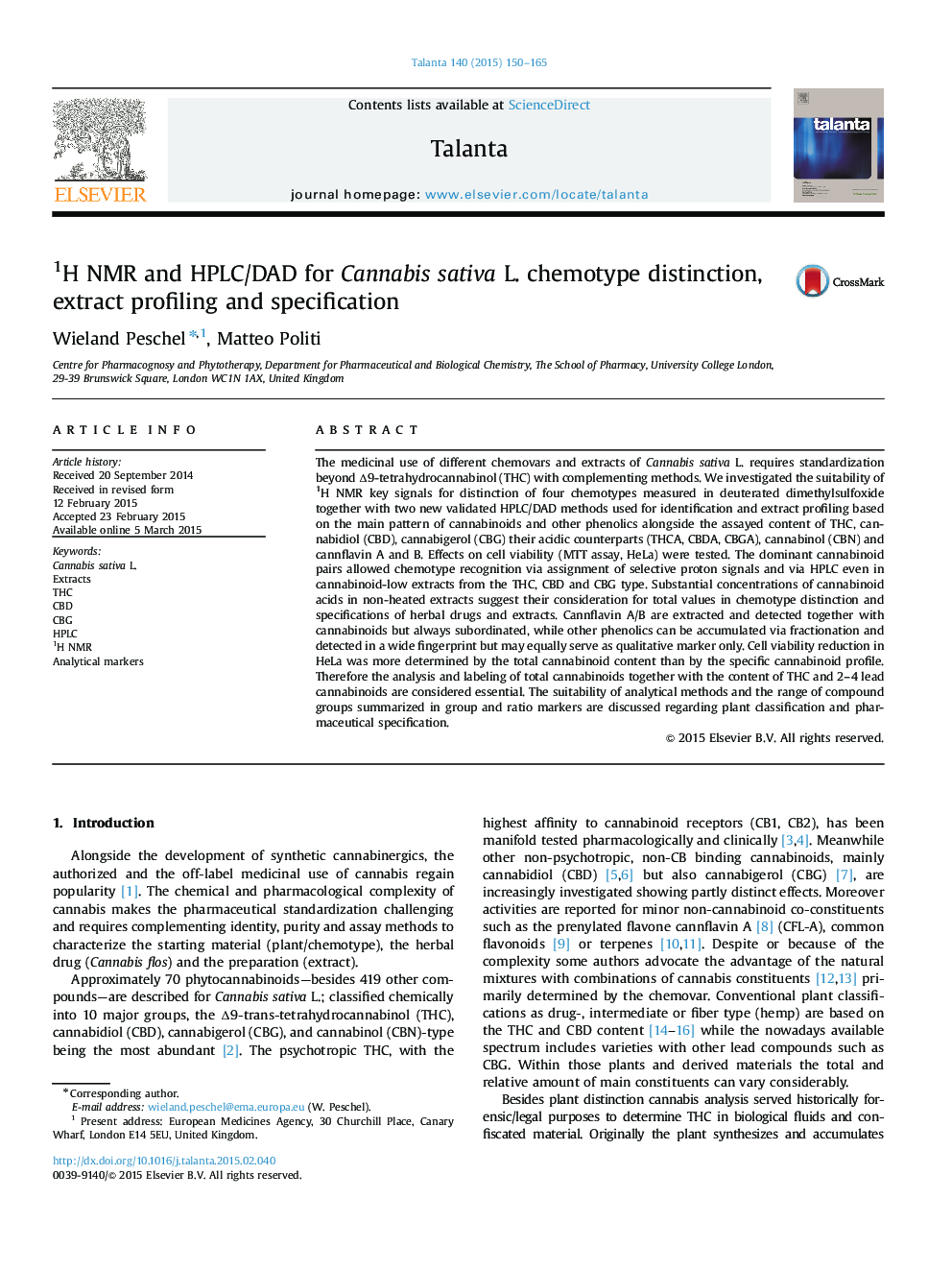| Article ID | Journal | Published Year | Pages | File Type |
|---|---|---|---|---|
| 1243071 | Talanta | 2015 | 16 Pages |
•1H NMR (DMSO-d6) key signals allow distinction of THC, CBD and CBG type cannabis.•We detect neutral/acidic cannabinoids and phenolics co-compounds via HPLC/DAD.•Non-heated extract profiles suggest consideration of cannabinoid acids.•Cell viability reduction correlated with the total cannabinoid content but not THC.•We suggest markers for drug distinction and pharmaceutical specification.
The medicinal use of different chemovars and extracts of Cannabis sativa L. requires standardization beyond ∆9-tetrahydrocannabinol (THC) with complementing methods. We investigated the suitability of 1H NMR key signals for distinction of four chemotypes measured in deuterated dimethylsulfoxide together with two new validated HPLC/DAD methods used for identification and extract profiling based on the main pattern of cannabinoids and other phenolics alongside the assayed content of THC, cannabidiol (CBD), cannabigerol (CBG) their acidic counterparts (THCA, CBDA, CBGA), cannabinol (CBN) and cannflavin A and B. Effects on cell viability (MTT assay, HeLa) were tested. The dominant cannabinoid pairs allowed chemotype recognition via assignment of selective proton signals and via HPLC even in cannabinoid-low extracts from the THC, CBD and CBG type. Substantial concentrations of cannabinoid acids in non-heated extracts suggest their consideration for total values in chemotype distinction and specifications of herbal drugs and extracts. Cannflavin A/B are extracted and detected together with cannabinoids but always subordinated, while other phenolics can be accumulated via fractionation and detected in a wide fingerprint but may equally serve as qualitative marker only. Cell viability reduction in HeLa was more determined by the total cannabinoid content than by the specific cannabinoid profile. Therefore the analysis and labeling of total cannabinoids together with the content of THC and 2–4 lead cannabinoids are considered essential. The suitability of analytical methods and the range of compound groups summarized in group and ratio markers are discussed regarding plant classification and pharmaceutical specification.
Graphical abstractFigure optionsDownload full-size imageDownload as PowerPoint slide
